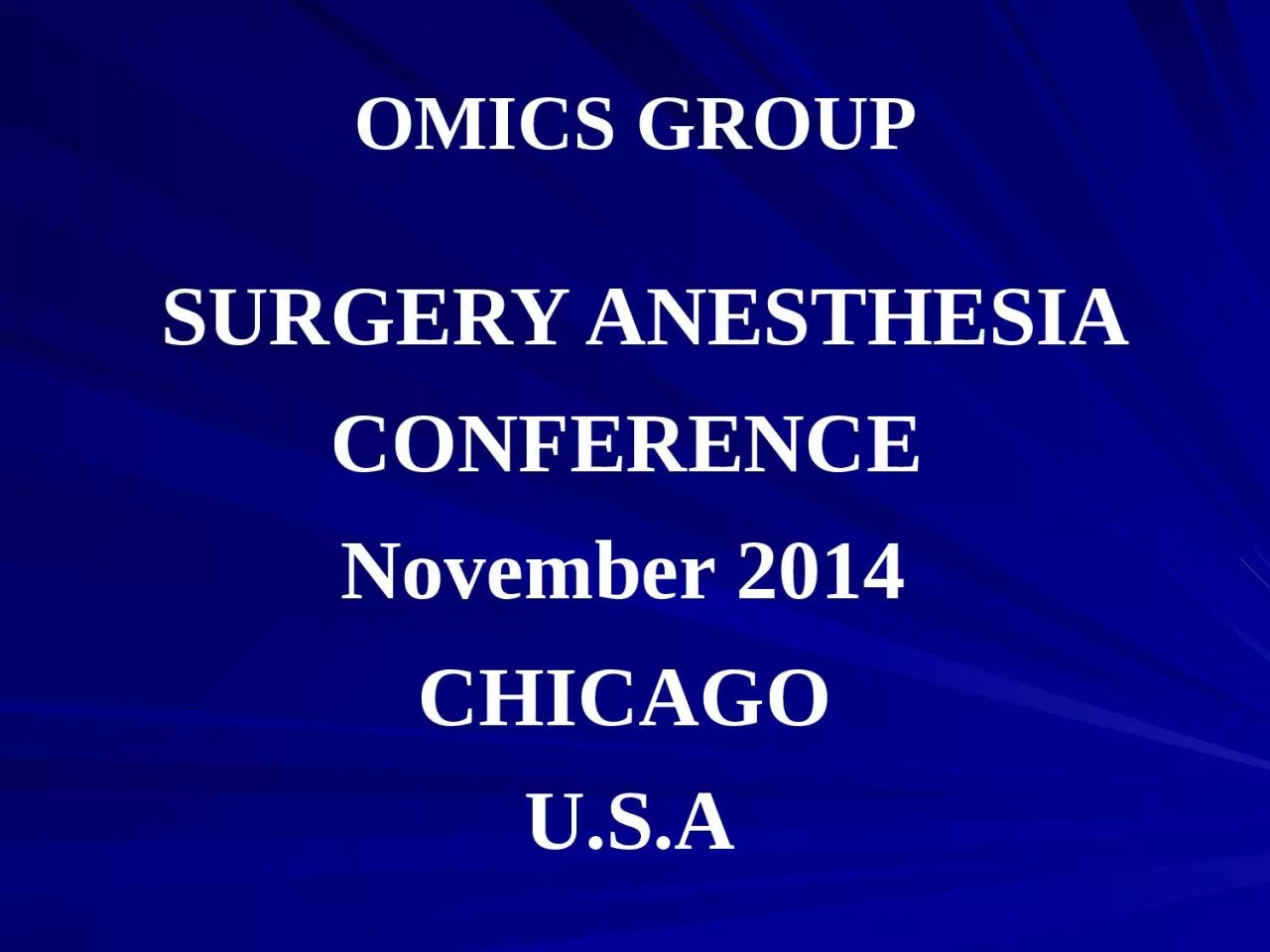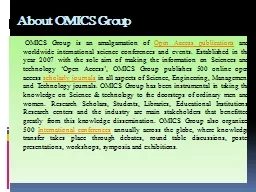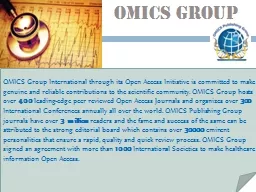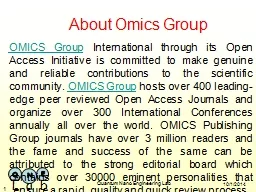PPT-OMICS GROUP SURGERY ANESTHESIA
Author : anastasia | Published Date : 2024-02-09
CONFERENCE November 2014 CHICAGO USA THE REAL CAUSE OF A PATIENT WITH ABDOMINAL PAIN Original case report Manuela Stoicescu Consultant MD PhD Assistant Professor
Presentation Embed Code
Download Presentation
Download Presentation The PPT/PDF document "OMICS GROUP SURGERY ANESTHESIA" is the property of its rightful owner. Permission is granted to download and print the materials on this website for personal, non-commercial use only, and to display it on your personal computer provided you do not modify the materials and that you retain all copyright notices contained in the materials. By downloading content from our website, you accept the terms of this agreement.
OMICS GROUP SURGERY ANESTHESIA: Transcript
Download Rules Of Document
"OMICS GROUP SURGERY ANESTHESIA"The content belongs to its owner. You may download and print it for personal use, without modification, and keep all copyright notices. By downloading, you agree to these terms.
Related Documents














